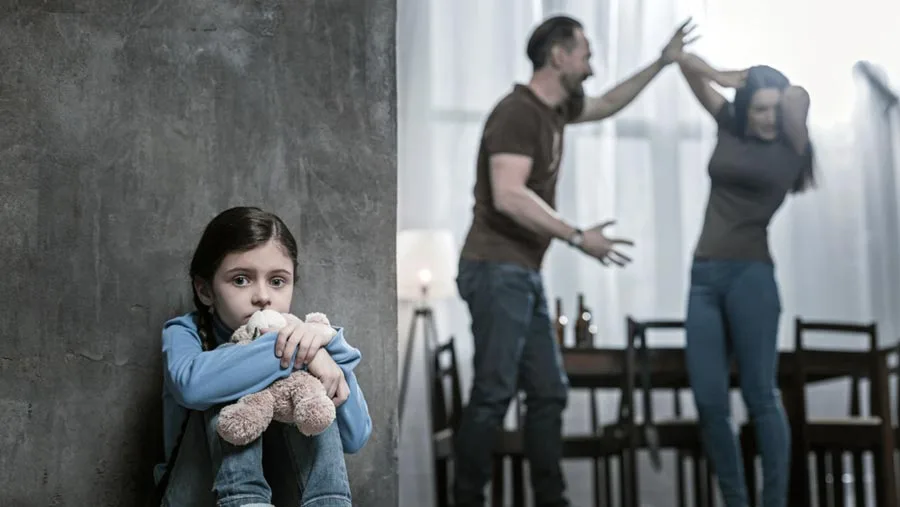Get Inpatient Support for BPD and Personality Disorders at Catalina
If you have arrived at our resource, whether for yourself or a loved one, you likely are aware that borderline personality disorder (BPD) is a mental health condition marked by instability in relationships, mood, and behavior.
Many people with BPD experience difficulty with their own self-image, as well as intense ups and downs in how they perceive or feel about others. Some people with BPD also struggle with self-harm, substance abuse, and other co-occurring concerns, like eating disorders.
But rest assured, BPD is a treatable condition. In fact, some people no longer meet the criteria for BPD after treatment. Residential mental health treatment is a proven treatment option for people with BPD.
At Catalina Behavioral Health, we offer multiple levels of care for those in need of mental health or addiction treatment, including a residential program for people with BPD.
So, what should you know about residential treatment for borderline personality disorder? Is it the right fit for you?
Let’s talk about the role of residential treatment for BPD and what to expect in our program first, including therapy types and how we set clients up for success after treatment. Then, we’ll discuss how BPD is diagnosed, its causes and risk factors, and the potential consequences of untreated BPD.
Confidential Trauma and PTSD Assessment
The Role of Residential Treatment for Borderline Personality Disorder
Borderline personality disorder can affect your life severely. Residential treatment for mental health can be ideal in many instances, such as those where mental health issues are moderate to severe and affect day-to-day life significantly.
Attending Catalina Behavioral Health’s residential treatment center for BPD means that clients get:
- Help for co-occurring disorders. Many people with BPD have one or more additional mental health concerns. Catalina Behavioral Health’s residential treatment programs are equipped to address a wide range of conditions. Every client at our facility gets an individualized treatment plan. So, if you have a co-occurring condition, like an anxiety disorder or a substance use disorder, it will be addressed alongside specialized borderline personality disorder treatment.
- Highly structured treatment plans. Our highly structured recovery plans involve multiple therapeutic modalities and full daily schedules with little self-directed downtime.
- 24/7 supervision. Some people with BPD face self-destructive behaviors like substance abuse, reckless driving or sex, self-harm, stealing, and eating disorder behaviors. Inpatient treatment provides constant supervision and support from compassionate staff members who can help you with behavior change in real-time.
In residential borderline personality disorder treatment at Catalina Behavioral Health, you’ll have the opportunity to practice healthy coping skills and follow through with new routines in a supportive environment. Temporary removal from daily life triggers and routines can be extremely helpful for residents working to overcome BPD symptoms.
During inpatient treatment at our Arizona-based facility, you’ll build trusting relationships with our staff members and will get access to extensive on-site amenities. A typical day in residential treatment might involve individual and group therapy sessions, recreational activities, educational groups, meals, and other services.
Dialectical Behavior Therapy (DBT) for BPD

If you’re looking for BPD treatment, you’ve probably heard of dialectical behavioral therapy.
Our residential inpatient treatment program uses a combination of evidence-based practices to help people with BPD and related disorders. Dialectical behavior therapy (DBT) was created to treat BPD. DBT is a highly effective treatment for BPD.
In DBT sessions, clients learn skills such as:
- Mindfulness.
- Distress tolerance.
- Emotion regulation.
- Interpersonal effectiveness (e.g., communicating with others, navigating interpersonal relationships healthily).
- Finding a middle ground (combatting all-or-nothing thinking, which can be common with BPD).
Developing DBT skills through individual and group therapy are a significant part of our inpatient program for BPD. for the most favorable treatment outcomes, our programs provide individualized treatment plans and involve multiple types of therapies and treatments.
Combining DBT With Other Effective Therapies
Each type of therapy you participate in during your program with us will have different benefits. In addition to dialectical behavioral therapy, treatments that may be involved in a borderline personality disorder program may include but aren’t limited to the following.
- Cognitive behavioral therapy (CBT) or trauma-focused CBT (TF-CBT).
- Transference-focused psychotherapy (TFP).
- Motivational interviewing (MI).
- Medication management.
- Psychodynamic therapy.
- Body movement.
- Life skills.
- Meditation.
- Family therapy.
The specific therapies and treatments you engage in at Catalina Behavioral Health will differ based on your unique needs. For example, those with co-occurring disorders like substance use disorders, anxiety disorders, or mood disorders may benefit from specific treatments.
It is very common for women (as well as men with BPD) to have one or more additional diagnoses, whether that is a mood disorder, a substance use disorder, or another concern. Our whole-person approach to treatment is designed to acknowledge and address all factors that influence your emotional well-being, such as past traumas and co-occurring conditions.
After Residential Borderline Personality Disorder Treatment Treatment: Next Steps and Aftercare

Ideal BPD residential treatment centers will help clients build an aftercare plan before they go. Our programs focus on long-term success, assisting clients through every step of the recovery process. Before you leave our residential inpatient program, we’ll help you create a custom aftercare plan.
Your aftercare plan will be unique to you but may involve:
- Outpatient treatment programs. Intensive outpatient programs (IOPs) provide a flexible environment for individuals with BPD to receive comprehensive care. IOPs offer a range of treatment approaches, including DBT, CBT, and family involvement, but let you return home when the treatment day is over. We offer multiple levels of outpatient care. Some of our clients start in residential mental health treatment and step down to an outpatient program once they’re ready.
- Continued therapy. Even if you don’t pursue a traditional outpatient program, continued dialectical behavioral therapy (DBT) groups, individual therapy, or both may be recommended.
- Ongoing medication management. If you take medication as part of your overall mental health treatment plan, continued medication management services may be ideal.
- Job and education plans. Often, intensive treatment incorporates the exploration of what you want your life to look like in the long term. You may decide to pursue a new occupational or educational opportunity after treatment.
Self-care is vital for people with BPD. Our programs help clients develop practical strategies and self-care patterns that help them cope with symptoms like emotional dysregulation day-to-day.
Healthy sleep patterns, regular meals, mindfulness activities, and communication skills are some examples of what you might focus on within your own self-care.
Get Effective Trauma Treatment Options at Catalina
How is BPD Diagnosed?
Some people looking for a BPD treatment center have a diagnosis already. Others may be pursuing a potential diagnosis, or they may be diagnosed with another mental health condition. BPD is typically diagnosed in early adulthood.
Catalina also offers an informal BPD test and self assessment tool that can assist until a clinician is seen. Although it can be diagnosed in younger people, providers usually wait until a person is 18+ unless a case is very clear.
To be diagnosed with BPD, you must experience at least five of the following symptoms in a chronic or repetitive pattern.
- Fear of abandonment.
- Patterns of intense, unstable interpersonal relationships marked by alternating themes of idealization and dislike.
- Identity disturbance, marked by persistently unstable sense of self or self image.
- Impulsive behavior in at least two areas with the potential to be self-damaging (e.g., self-harm, eating disorder behaviors, reckless driving, excessive spending, or risky sexual activity).
- Unstable mood, marked by intense emotions or mood swings, which may change quickly.
- Transient, stress-related paranoia or severe dissociative symptoms.
- Intense and inappropriate anger or difficulty controlling anger.
- Recurrent suicidal behavior, threats, or gestures.
- Chronic feelings of emptiness.
Borderline personality disorder can overlap with other mental health issues at times. During your intake assessment for residential borderline personality disorder treatment at our facility, our treatment team will ask about your current symptoms and history.
Intake assessments help us get to know you better and understand potentially important treatment considerations, like trauma history.
What are Causes of and Risk Factors for BPD?

We strongly feel that the underlying causes of mental health conditions like personality disorders should be addressed when applicable. Here are some possible contributing or risk factors you relate to if you have or suspect that you have BPD.
- Family history. Individuals who have family members with BPD or another mental illness may be more likely to develop the disorder.
- Trauma. Childhood trauma (e.g., childhood physical or emotional abuse), can increase the risk of developing BPD. Statistics suggest that trauma is one of the most prevalent risk factors in BPD development.
- Brain structure and function. People with BPD may have functional differences in areas of the brain that control things like impulse and emotion regulation. However, it is important to note that these brain differences can be due to other risk factors, like traumatic events.
Evidence supports the idea that a combination of genetic and environmental factors are likely what lead to the development of BPD.
Consequences of Untreated Borderline Personality Disorder
Seeking BPD treatment is essential to manage symptoms and improve quality of life. BPD often comes with truly debilitating symptoms. When they go unaddressed, the symptoms and patterns that have a negative impact on your life and how you feel will likely continue.
Untreated borderline personality disorder (BPD) can lead to chronic emotional instability, increased risk of other (new or worsening) mental disorders, suicide, unstable relationships, isolation, academic and occupational challenges, and substance abuse. When mental health concerns go unaddressed, they can also affect your physical health and well-being.
Getting compassionate and effective care at a treatment center like Catalina Behavioral Health can help you regain control and prevent new or worsening effects of untreated mental health concerns.
Up To 100% of Rehab Costs Covered By Insurance
Call Catalina Behavioral Health for Inpatient BPD Treatment
Catalina Behavioral Health offers integrative and comprehensive treatment for BPD and other mental health conditions. Our treatment center in Arizona works with adult clients aged 18+. To make treatment accessible, we accept most forms of health insurance.
Whether you’re looking for a treatment program for yourself or a loved one, please contact Catalina Behavioral Health today. Call our admissions line to start the intake process, learn more about our programs, or verify your insurance coverage.
FAQs About Residential Treatment for BPD
Is residential treatment effective for BPD?

Yes. Research shows that both residential inpatient and day treatment are effective for the treatment of BPD. The right level of care for you may depend on factors like your current level of symptom severity.
What is the most promising treatment for borderline personality disorder?
DBT treatment was designed to treat BPD and has been proven effective for the condition. However, once-weekly DBT groups and individual therapy sessions aren’t enough for everyone with BPD. People with more severe symptoms may benefit most from a residential treatment program that includes therapeutic modalities like DBT.
What is the best treatment plan for borderline personality disorder?
Dialectical behavior therapy (DBT) is the gold standard for BPD as far as therapeutic modalities go. However, outpatient therapy sessions aren’t intensive enough for everyone in need of BPD treatment. Inpatient borderline personality disorder treatment is more intensive than once or twice-weekly therapy sessions.
Ideally, a BPD treatment center should offer a combination of dialectical behavior therapy and other treatments that support the needs and goals of each individual client.
References
- https://www.ncbi.nlm.nih.gov/books/NBK55415/ https://www.ncbi.nlm.nih.gov/books/NBK430883/
- https://www.ncbi.nlm.nih.gov/pmc/articles/PMC6040072/
- https://www.nimh.nih.gov/health/publications/borderline-personality-disorder
- https://www.ncbi.nlm.nih.gov/pmc/articles/PMC8495240/
- https://pubmed.ncbi.nlm.nih.gov/35420143/





